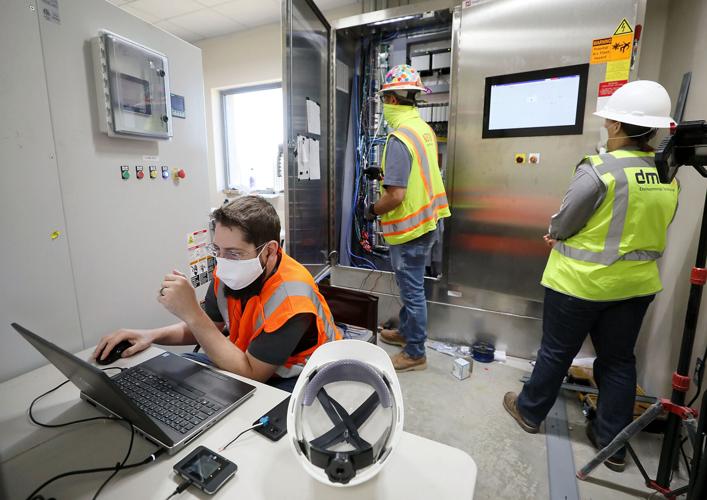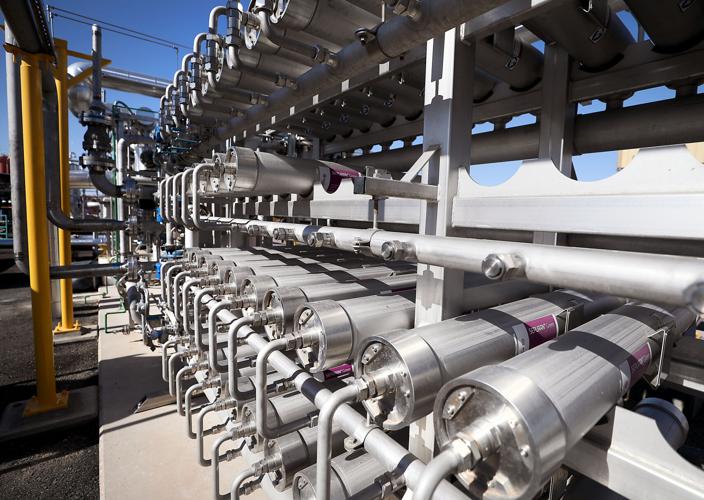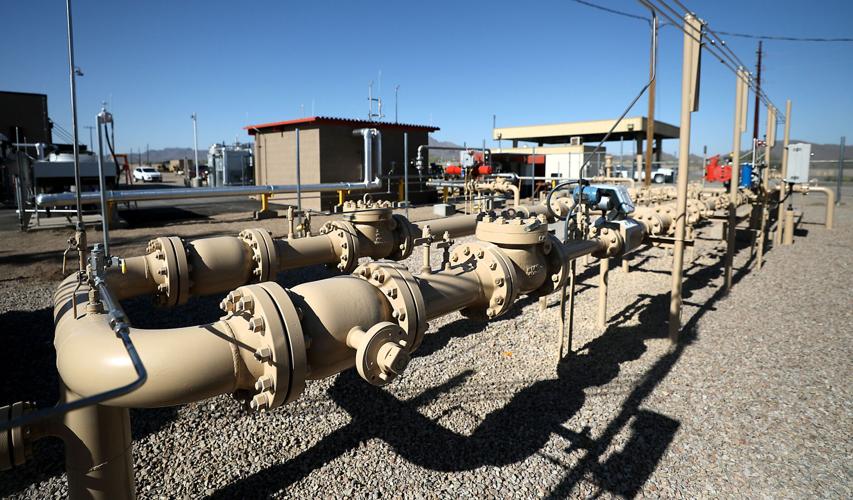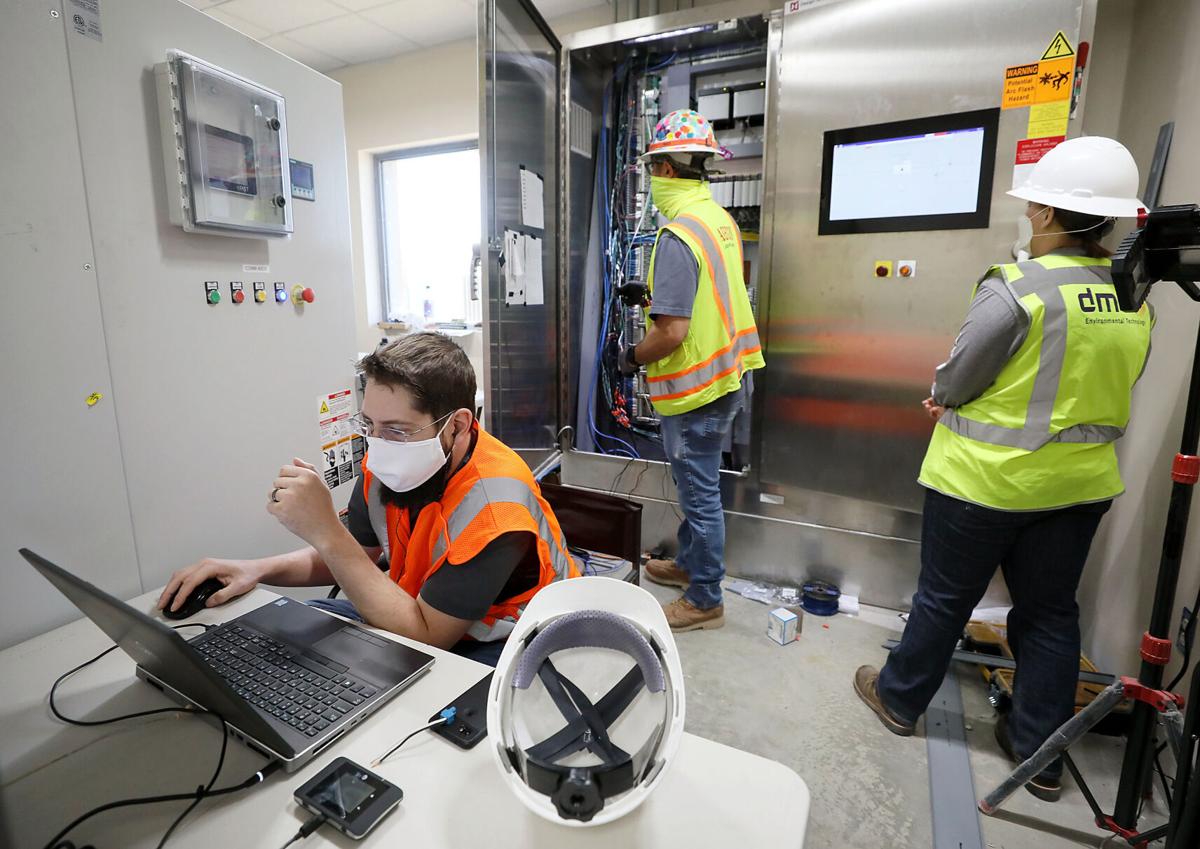Call it poo power.
Arizona natural-gas users could soon be heating their homes and cooking their food, and perhaps fueling their vehicles, with renewable natural gas made from cow manure or sewer waste.
Southwest Gas, the state’s biggest gas utility, is in the process of linking its system to four renewable natural gas (RNG) plants, including a Pima County wastewater plant in Marana and three Central Arizona dairy farms.
The county is conducting final testing of its long-awaited RNG facility at its Tres Rios Wastewater Reclamation Facility off West Ina Road.
Using authority granted by the Arizona Corporation Commission in 2018, Southwest Gas also is connecting to its pipeline system three more RNG plants planned for dairies in Maricopa, Buckeye and Gila Bend and may buy gas from those projects in the future.
Elsewhere, developers recently broke ground on an RNG plant at a dairy in Eloy, about 40 miles north of metro Tucson, as part of a partnership with oil giant Chevron to make compressed natural gas for vehicles.
Southwest Gas says it’s committed to growing renewable natural gas in Arizona.
“As part of our efforts to help our customers and the communities we serve achieve sustainability and emissions reductions goals, Southwest Gas is acting as a catalyst to bring sources of RNG, from Arizona farms, dairies, landfills and wastewater treatment facilities together with end users,” Southwest Gas spokeswoman Amy Washburn said.
“What is happening now is the just the beginning of Southwest Gas’ plans for the sustainable energy future,” she said.

Southwest Gas is in the process of linking its system to the Pima County wastewater plant in Marana, the Tres Rios Wastewater Reclamation Facility.
Sewage to gas
The Tres Rios RNG project has been in the works for some time as Pima County for many years has used raw biogas to fully power the engines used at the Tres Rios sewer plant.
The country “flared,” or burned off, its excess production to avoid venting pure methane, which is a potent greenhouse gas.
After studying the issue as part of a major upgrade to the sewer plant in 2014, the county decided that it would be more economical to build a plant to refine the Tres Rios’ raw biogas into RNG for sale, said Jeff Prevatt, deputy director with the Pima County Regional Wastewater Reclamation Department.
In 2014, the county signed an agreement with a biogas joint venture to build the RNG treatment facility and market the gas. But the deal was canceled a year later when a customer the joint venture expected to buy the RNG – a glass supplier to computer giant Apple – folded and the joint venture couldn’t find another ready customer.
Pima County decided to go ahead and build its own RNG plant and partner with Southwest Gas to link it to the gas system to market the RNG.
In 2019, the county began building the RNG plant at Tres Rios at a cost of about $12 million, up from an earlier estimate of $8 million because the county opted for a higher-purity system in order to market the highest-quality, most valuable gas, Prevatt said.
The Tres Rios plant, which was in final testing this week and is expected to go online in June, will take methane-rich gas from the wastewater reclamation process – using an anaerobic “digesting” process — and purify it into utility-grade natural gas, which is mostly methane.
“We want to produce the highest purity gas we can, so we get the revenues,” Prevatt said. “Ours is strictly revenue-driven, to return our investment to our ratepayers, and cut back on CO2 and flaring.”

Renewable gas travels through membranes to filter out carbon dioxide at the Tres Rios Wastewater Facility.
Quick payback
The county plans to use a broker to market the renewable natural gas to utilities, or for compressed natural gas vehicle fuel, while also selling the related carbon-reduction credits — which are more lucrative than the gas — in states like California that use them, he said.
The county expects to recover its initial investment relatively quickly, Prevatt said.
Depending on the market price for natural gas, the county expects to earn about $2 million annually from the Tres Rios RNG operation, including $300,000 to $400,000 in gas sales and $1.5 million to $2 million from the sale of carbon credits to places like California.
The project will not increase the county’s wastewater service rates and instead will help keep rates down, Prevatt said.
“We haven’t increased sewer rates in five years, and what this will allow with this revenue stream coming in, it will help offset future rate increases,” he said.
In October, the Arizona Corporation Commission approved an agreement to interconnect the Tres Rios RNG plant with Southwest Gas’ pipeline system, which also connects to the El Paso Natural Gas interstate pipeline.
Under the agreement approved by regulators, the county will pay $850,000 through service and delivery fees to fund the interconnection with Southwest Gas, which in 2017 built a stub off its nearby high-pressure gas line to eventually link up with Tres Rios.
If Southwest Gas strikes a deal to buy renewable natural gas from the plant, it will pay the county a price based on its avoided costs — what it would otherwise typically pay for fossil natural gas.
Cow power
The Corporation Commission last year approved Southwest Gas’ interconnection agreements for the Tres Rios project and the three dairy-based biogas plants:
Sunoma Renewable Biofuel LLC, backed by RNG developer Fortistar, will build and operate an RNG plant in Gila Bend at the Paloma Dairy, a longtime family farm with about 14,000 dairy cows. The plant is expected to go online by October, and Southwest Gas is spending about $1 million to connect the new plant to its gas pipelines.
The Butterfield Dairy in Buckeye is building an RNG plant to refine biogas from its 20,000-head herd, with the gas company spending about $900,000 to connect the system when it goes online in December.
The Milky Way Dairy in Maricopa, which has about 30,000 cows, is building an RNG facility set to go online by December 2022. Southwest Gas is building a $4 million pipeline to connect the system.
Southwest Gas will get the new RNG on the market through its pipeline system and may enter into contracts to buy the gas at market prices, under the interconnection agreements approved by state regulators.
The four RNG projects are just the beginning for Southwest Gas, Washburn said.
“Southwest Gas is committed to making more RNG available to the market over time,” she said. “We are looking at several opportunities including owning and or operating our own RNG facilities, developing interconnects to RNG facilities operated by third parties, purchasing RNG credits and purchasing RNG as part of our gas supply portfolio on the open market.”

Once filtered, the biogas travels to these pipes, which are owned by Southwest Gas.
RNG building boom
Arizona has had only a few RNG plants up to now, including a few dairy operations in the Phoenix area that use bio-methane to generate their own electricity.
Since 1999, Tucson Electric Power has been using methane gas from the Los Reales Landfill to provide raw methane gas to fuel TEP’s H. Wilson Sundt Generating Station on East Irvington Road.
More recently, in 2019 the city of Phoenix christened a biogas-to-RNG plant at its 91st Avenue Wastewater Treatment Plant that is the largest of its kind in the U.S.
And in early May, RNG developer Brightmark broke ground on a new RNG plant at the Caballero Dairy in Eloy, which is part of a joint venture with oil giant Chevron to develop renewable natural gas for compressed natural gas vehicles.
The new Arizona plants coming online are part of a national trend as gas utilities invest in RNG to meet environmental goals and plant operators look to cash in on selling RNG and associated carbon credits in states including California, Washington and Oregon.
According to the Coalition for Renewable Natural Gas, an industry advocacy group, there are 157 RNG plants operating in the U.S., and that is expected to double with 76 under construction and another 79 planned.
Renewable natural gas from sources like dairies and sewer plants is considered “carbon neutral” because it comes from organic sources that once absorbed carbon dioxide from the atmosphere.
RNG also displaces the use of fossil gas, while also reducing emissions of methane — a very potent greenhouse gas — from naturally decaying animal or plant waste.
But while it is much cleaner than coal, burning RNG still emits harmful greenhouse gases that contribute to global warming, critics say.








